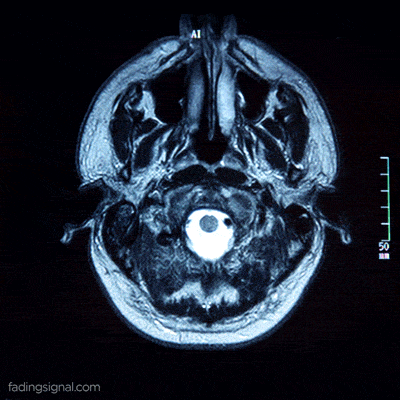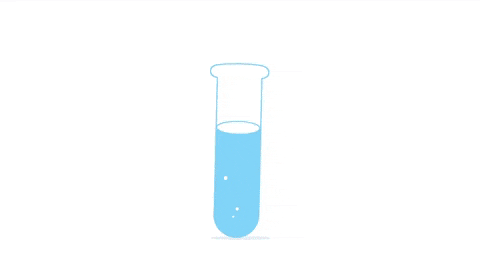Opportunistic Salpingectomy, Updated Osteoporosis Guidelines 2023, New Treatment For Acute Stroke, Tiny Patch Could Replace Blood Tests, Gut-Brain Health Explained In Under 5 Minutes.
Opportunistic salpingectomy: A way to reduce to ovarian cancer risk?

Gist: Opportunistic salpingectomy, a procedure involving the removal of fallopian tubes during gynecological surgeries like C-sections or endometriosis treatment, is being recognized as a way to reduce ovarian cancer risk.
Nitty-Gritty: Unlike tubal ligation, a traditional method of permanent birth control where the tubes are cut, clamped, or sealed, salpingectomy entirely removes them, as most ovarian cancers arise in the fallopian tube. Over the past decade, Canada has performed numerous such surgeries on women not planning to have more children. The procedure, developed by Dr. Dianne Miller, has increased in popularity, with uptake growing in several provinces. Preliminary research suggests the salpingectomy significantly lowers the incidence of serous and epithelial ovarian cancers.
Big Picture: Experts urge caution, clarifying the procedure's role in preventing, not guaranteeing the absence of, such cancers. As ovarian cancer is often diagnosed at an advanced stage, preventative measures are important, making the increasing adoption of opportunistic salpingectomy a positive trend in women's health.
If you would like to learn more about prevention and detection methods of ovarian cancer, you can check out Ovarian Cancer Canada's page.
Original source: here.
Updated Osteoporosis Canada guidelines set to be released Fall 2023🦴

Gist: Osteoporosis, a silent disease affecting one in three women and one in five men in Canada, weakens bones, making them prone to fracture. Often symptomless until a bone break, osteoporosis can be detected by a bone density scan.
Nitty-Gritty: Bones constantly undergo renewal, with osteoclasts breaking down old bone and osteoblasts building new bone. Osteoporosis occurs when osteoclasts outpace osteoblasts, resulting in bone loss.
Several factors increase osteoporosis risk, including age, low physical activity, certain medications, and genetics. Women are particularly susceptible due to estrogen loss during perimenopause and menopause, accelerating bone density loss. However, osteoporosis is not merely a byproduct of aging; it is a chronic disease, with genetics playing a significant role.
Big Picture: Prevention starts early with children building bone mass through sufficient calcium, vitamin D, and regular physical activity. Weight-bearing and balance exercises, along with a diet rich in calcium, can help maintain bone health in adults. In fall 2023, Osteoporosis Canada will release new evidence-based guidelines for the disease's management and treatment, incorporating research from the past decade.
Original source: here.
Novel treatment for acute stroke

Gist: UCLA Health researchers have conducted a pilot study testing the use of high-definition cathodal transcranial direct current stimulation (HD C-tDCS), a targeted electrical stimulation, in treating acute ischemic stroke - the most prevalent type of stroke caused by a clot blocking blood supply to the brain.
Nitty-Gritty: The study, the first of its kind, offered a potential alternative for patients unsuitable for current treatments such as clot-dissolving drugs or clot extraction devices. In this experiment, electrodes were strategically placed on the scalp to deliver a weak electrical current to the part of the brain affected by low blood flow, a technique previously used in some neurological and psychiatric conditions. The 10 participant patients, ineligible for other treatments and within 24 hours of stroke onset, were split into two groups. Seven received active treatment and three received "sham" (i.e., placebo) stimulation. Results demonstrated that in patients treated with HD C-tDCS, approximately 66% of the threatened brain tissue was preserved in the first 24 hours post-stroke, while the placebo group showed no such preservation. Additionally, the treatment was successfully administered in emergency settings, well-tolerated, and showed signs of improved blood flow in brain scans.
Big Picture: Researchers plan to expand the study to include more sites and patient types– Sounds very promising!
If you'd like to learn more about how to reduce the risk of stroke, you can check out the Heart & Stroke's Risk & Prevention page.
Original source: here.
The new Theranos, sorta?🧪

Gist: Scientists from the Washington University School of Medicine have developed a disposable, dime-sized patch that can sense biomarkers and other compounds to search for signs of diseases.
Nitty-Gritty: Coated with microneedles less than a millimeter long, the patch taps into interstitial fluid, the protein-rich liquid surrounding skin cells. This process can make medical tests simpler, less invasive, more accessible, and up to 800 times more sensitive than traditional biomarker tests. The research, led by materials scientist Srikanth Singamaneni, was published in Nature Biomedical Engineering. While microneedles have mainly been used for drug delivery or vaccinations, this technology can potentially provide access to interstitial fluid, which has been considered a valuable medical resource but is hard to access through standard means.
Big Picture: The microneedle patch could simplify medical testing and allow it in regions where access to medical supplies and equipment is limited. Stay tuned for developments!
Original source: here.
Beyond Text: Learn with Dr. Andrew Huberman the exciting wonders of the Gut-Brain Health connection in this full animated video. Run time: 5 min, 54 secs.
Interested in previous newsletters or other articles we’ve published? Check them out here at: thefullpanel.com
Got a question for us? Suggestions for content you’d like to see? Feedback? E-mail us at: hello@mail.thefullpanel.com
🤗 Don’t forget to share with your friends! 👋
Disclaimer: The content provided on The Full Panel is for informational purposes only and is not intended to serve as a substitute for professional medical advice, diagnosis, or treatment. The information presented should not be considered or used as a replacement for personalized, expert advice from a healthcare professional.
While we strive to provide accurate, up-to-date, and relevant information, we make no warranties or representations about the completeness, reliability, or accuracy of the content presented. The information found herein may be subject to change without notice as medical knowledge and practices evolve over time. We strongly recommend consulting with a qualified healthcare professional before making any health or medical decisions.
